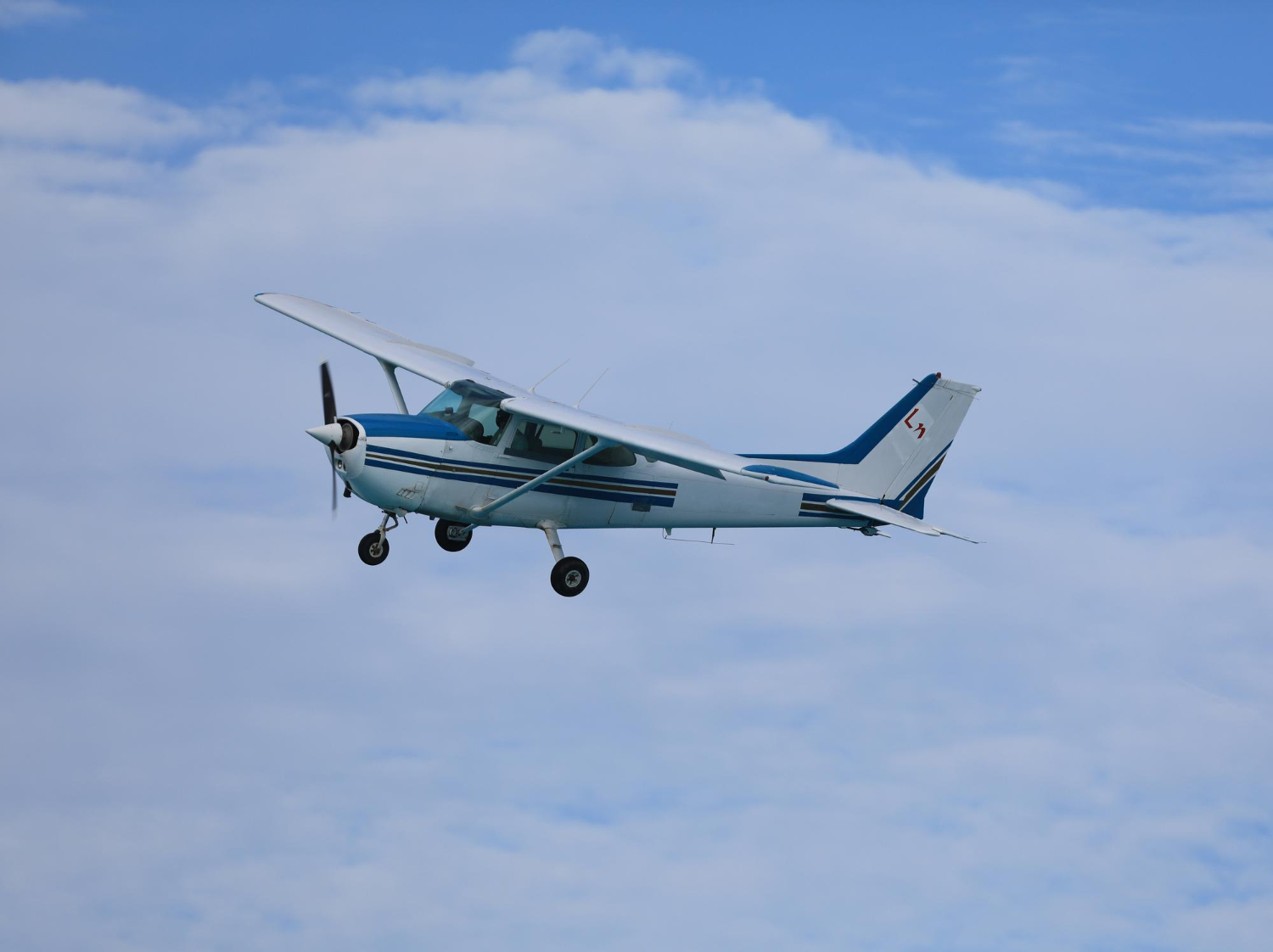Cross-country flights are one of the most exciting aspects of being a pilot. They mark a transition from local training flights to real-world application—navigating unfamiliar airspace, coordinating with multiple ATC facilities, and managing fuel, weather, and diversions. But with great freedom comes great responsibility. Proper planning is not optional—it’s essential.
In this comprehensive guide, we’ll walk through the most critical elements of planning and executing a safe cross-country flight—whether you’re a student pilot or already certificated.
1. Start with a Clear Objective
Before diving into charts and weather briefings, know your “why.” Are you flying for training, visiting family, building hours, or testing your endurance and planning skills?
Your objective affects how far you’ll fly, the type of airspace you'll encounter, whether you'll need alternates, and how you’ll prioritize comfort versus complexity. Defining this early will guide your decisions for the rest of the flight planning process.
2. Know the Regulations

To fly a cross-country legally, especially for training or logging time, make sure you meet the FAA requirements:
- For Private Pilot, a cross-country flight must be more than 50 nautical miles from the original point of departure.
- Student pilots need an endorsement from their instructor for each solo cross-country flight.
- Night cross-countries have additional requirements and planning needs.
Know whether your flight meets the requirements for the rating you're pursuing.
3. Plan the Route with Care
Use sectional charts, digital EFBs like ForeFlight or Garmin Pilot, and VFR charts to plan your route. Here’s what to consider:
A. Choose VFR Waypoints
- Select waypoints every 15–30 minutes.
- Use easily identifiable landmarks—intersections, airports, highways, rivers, towers.
- Avoid airspace that you are not qualified or cleared to enter.
B. Avoid Complex Airspace
If possible, route around Class B and busy Class C airports unless you’re comfortable communicating with ATC and navigating through controlled airspace.
C. Plan Diversion Options
Mark suitable alternate airports along the route in case of deteriorating weather, mechanical issues, or fatigue.
4. Check Weather—Then Check Again

Weather is one of the most dynamic risks in cross-country flying. Don’t check it once and move on. Build a routine:
A. Start with the Big Picture
- Use aviationweather.gov, Windy.com, or EFBs to get an overview of fronts, cloud layers, and pressure systems.
- Identify whether you’ll face VFR, MVFR, or IFR conditions along the route.
B. Check Key Weather Products
- METARs and TAFs (current and forecasted conditions)
- Area Forecasts (FA) for enroute and destination outlook
- Winds aloft for fuel planning and groundspeed estimation
- AIRMETs/SIGMETs for turbulence, icing, and convective activity
- TFRs and NOTAMs that might affect your route or airports
C. Have a “No-Go” Criteria
Decide in advance what conditions you’re not willing to fly into. For example:
- Less than 5 miles visibility
- Ceilings below 3,000 feet AGL
- Surface winds above 20 knots
- Significant turbulence forecast
Good pilots cancel or delay flights—it’s a sign of sound judgment, not weakness.
5. Fuel Planning: Don’t Just Hope, Calculate
Fuel is not just about reaching your destination—it’s about alternatives and safety.
- Use winds aloft forecasts to estimate groundspeed and calculate fuel burn for each leg.
- FAA regulations require:
- Day VFR: 30-minute fuel reserve
- Night VFR: 45-minute fuel reserve
Pro Tip: Double the legal minimum. Aim to land with 1 hour of fuel onboard whenever possible.
6. Weight and Balance + Performance
Always do a full weight and balance calculation and check takeoff/landing performance—especially at high-density altitude airports.
Even if you’re flying solo, full fuel and gear can put you at or above gross weight—compromising climb performance, especially on hot days or short runways.
7. Use a Navigation Log (Nav Log)
A Nav Log keeps your flight organized and helps track progress. It should include:
- Waypoints and checkpoints
- Course and heading
- Distance
- Estimated Time Enroute (ETE)
- Groundspeed (adjusted for wind)
- Fuel burn per leg
- Radio frequencies for each area
- Notes on airspace and hazards
Whether you use paper or electronic, update it during the flight to compare actual vs. planned.
8. Flight Plan Filing and Flight Following

A. File a Flight Plan
Even for VFR, file a flight plan with Flight Service—especially if you’re flying solo or in remote areas. This gives you a safety net if something goes wrong.
B. Use VFR Flight Following
Request flight following from ATC for extra eyes in the sky. They’ll help you:
- Avoid traffic
- Alert you to TFRs
- Help with navigation
- Provide emergency assistance
Just call your nearest approach control and request: “Request VFR flight following to [destination] at [altitude].”
9. Brief the Departure and Arrival
A good pilot thinks through both ends of the flight:
A. Departure
- Any local procedures or noise abatement?
- Terrain or towers near the airport?
- Departure frequency and initial heading?
B. Arrival
- Pattern altitude and CTAF for the destination
- Terrain and obstacles on approach
- Preferred landing runway based on winds
- Is the airport towered? Know the arrival procedure.
Have the airport diagram ready to avoid runway confusion.
10. Know the Emergency Options
Before you take off, ask yourself:
- What will I do if I lose engine power over each leg?
- Where will I land?
- What’s the frequency for the nearest ATC or FSS?
Planning your “what if” scenarios gives you an immediate plan of action in a real emergency, reducing decision paralysis.
11. Pack for Success and Safety
Even short cross-country flights demand the right gear.
A. Essentials
- Current sectional and terminal charts
- Kneeboard or tablet holder
- Headset and backup batteries
- Flashlight (for day and night flights)
- Checklist and aircraft POH
- Portable charger and power bank
B. Survival Equipment
If flying over remote terrain, bring:
- Food and water
- Emergency locator beacon or PLB
- First aid kit
- Warm clothes or space blanket
- Survival tools (knife, lighter, signal mirror)
12. In-Flight Discipline
Even with solid preflight planning, the flight can surprise you. Stay sharp:
A. Update Weather Enroute
Use in-flight weather from ADS-B, ATIS, AWOS/ASOS, or Flight Service (122.2 MHz). Don’t be caught off guard by worsening conditions.
B. Stay Ahead of the Airplane
Always be thinking 5–10 minutes ahead:
- Next checkpoint?
- Fuel status?
- Airspace approaching?
- ATC frequency changes?
C. Use Checklists Religiously
Don’t rely on memory. Use flow checks backed by written checklists for every phase:
- Pre-takeoff
- Cruise
- Descent
- Landing
- Emergency scenarios
13. Dealing with Diversions
No plan survives first contact with reality. Weather, airspace, or discomfort might force a diversion.
Here’s how to handle it:
- Turn toward the safest general direction immediately
- Maintain situational awareness—stay calm
- Use EFB or charts to identify suitable alternate airports
- Communicate: Inform ATC or Flight Service of your intentions
- Update your navigation log and recalculate ETE/fuel
14. Debrief Your Flight
After landing, take a moment to reflect:
- What went well?
- What didn’t go as planned?
- What would you do differently?
Even solo flights are learning opportunities. A short debrief helps you grow as a pilot and improves future cross-countries.
Summary: Cross-Countries Are Where Pilots Are Made
Cross-country flights are both an adventure and a rite of passage. They test your ability to plan, think critically, make decisions, and adapt. Whether you’re navigating for the first time or building hours for your commercial certificate, safety starts long before the wheels leave the ground.
The secret to safe and enjoyable cross-country flying? Respect the process. Prepare deeply. Fly smart.
Remember, good planning isn’t just about reaching your destination—it’s about having the knowledge, foresight, and judgment to return home safely.

Comments are closed.